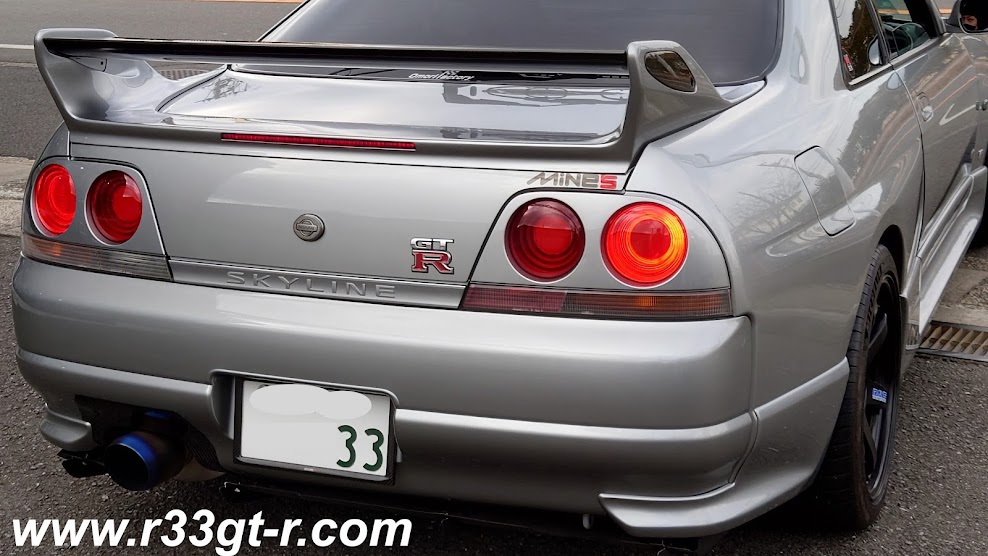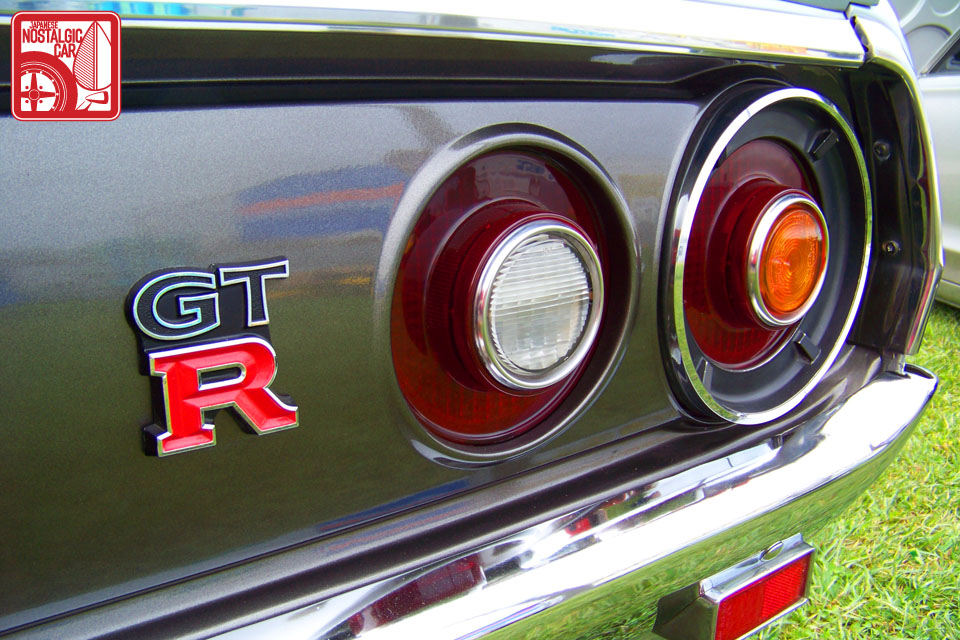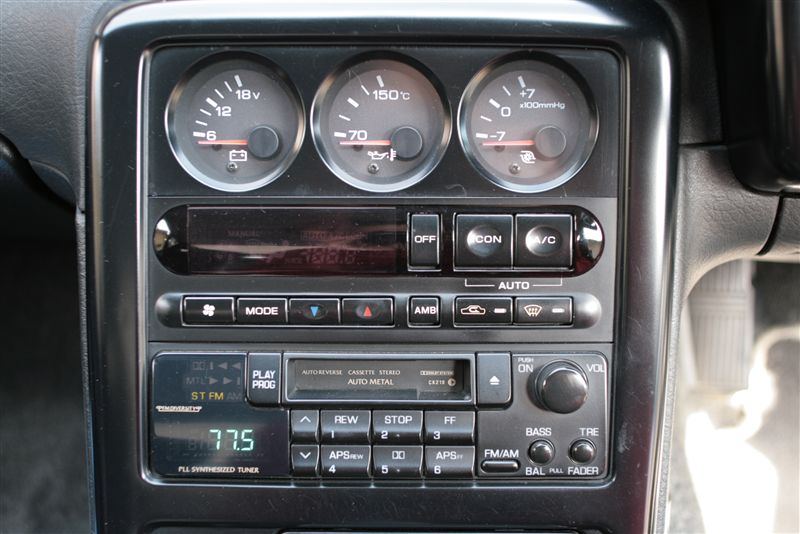Wheels:
It's common knowledge that BBS Japan made the forged aluminum alloy wheels for R32, R33 and R34 GT-Rs. What is not as well known is that, in fact, the R33 GT-R wheels were based on the look of the R32 wheels – instead of 5 solid spokes, there are 5 hollowed out spokes (so they appear to be 10 spokes).
 |
| R32 GT-R wheel. From: http://www.e-polish.info/sagyou-R32.html |
 |
| A lovely Midnight Purple car with the OEM wheels. Courtesy of Christopher Ziolkowski |
In the beginning, there were two candidates for wheels – a refined/evolved version of the R32, or a new 5 spoke design. They wanted to go with the first design, but quickly realized that in a 17 inch rim size, the wheel got heavier, which is how they came up with the 2 rib per spoke design.
At the time, the 2 rib wheels were rare, so appropriate for the GT-R. The wheels were also designed to improve the cooling characteristic of the wheel, so that owners could go to the track using the OEM wheels.
There was also a candidate design of 5 flat spokes (like the Ferraris back then), but the dished look won out, to give a sense of fullness and strength.
The R32 wheels, by the way, were inspired by F1 wheels, and their design was done so that the calipers would be visible from above. Same theme with the R33.
So what is the difference between the Bridgestone Expedia S-07 tires that came on the V-Spec, vs the Bridgestone RE010s that came on the standard BCNR33?
Both were specifically designed for the GT-R, and we would expect to be the S-07 to be higher performance tire... which is true to an extent.
It turns out that the RE010s were better all around tires, while the S-07 were better in the dry but not so good in the wet. Most interesting however is that the S-07’s design minimized tire noise (to those on the outside, due to new noise regulations for cars passing in 1998.)
For the UK spec R33 GT-Rs, it's not surprising they were fitted with the RE010s due to their all weather characteristics.
Next post - How the R33 GT-R improved upon the R32 GT-R, Part 1 (High Traction Layout, Aerodynamics)
Both were specifically designed for the GT-R, and we would expect to be the S-07 to be higher performance tire... which is true to an extent.
 |
| Bridgestone S-07 From: http://www.croooober.com/item/1876796 |
 |
| RE010 From: http://minkara.carview.co.jp/en/userid/167168/car/143531/2987993/parts.aspx |
It turns out that the RE010s were better all around tires, while the S-07 were better in the dry but not so good in the wet. Most interesting however is that the S-07’s design minimized tire noise (to those on the outside, due to new noise regulations for cars passing in 1998.)
For the UK spec R33 GT-Rs, it's not surprising they were fitted with the RE010s due to their all weather characteristics.
Next post - How the R33 GT-R improved upon the R32 GT-R, Part 1 (High Traction Layout, Aerodynamics)













